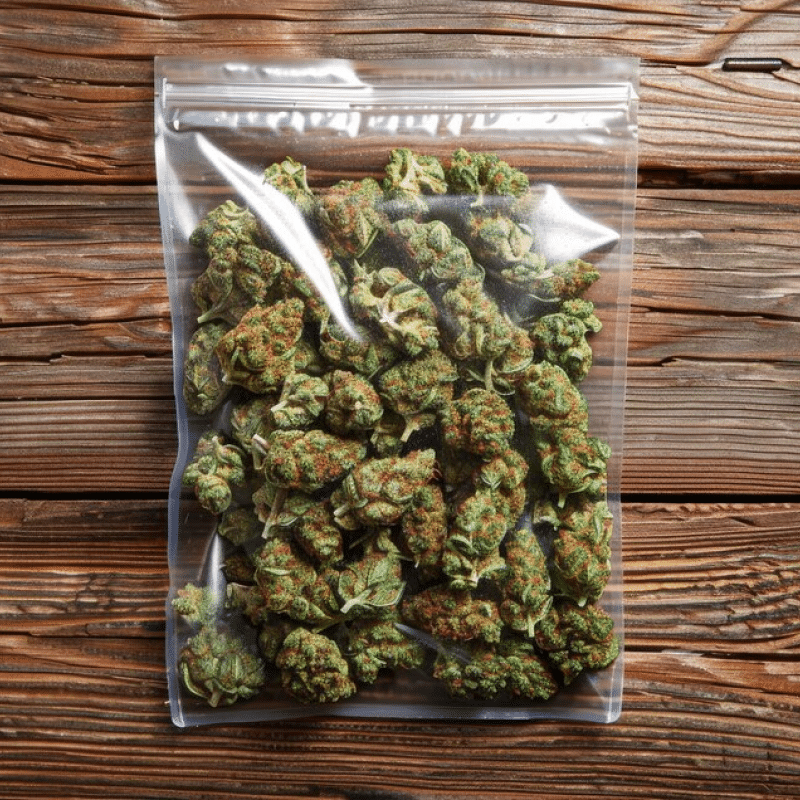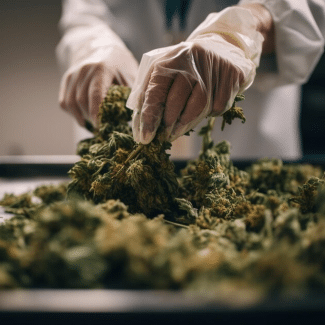Navigating the Complex World of Cannabis Packaging Regulations
This article provides an overview of the critical regulations surrounding cannabis packaging. It highlights the importance of compliant packaging for businesses in the cannabis industry, detailing essential requirements such as child-resistant features, tamper-evident seals, and mandatory labeling. Additionally, the piece emphasizes the need for cannabis brands to balance creative design with regulatory compliance, ensuring safety and sustainability while navigating the complex landscape of state and federal laws.

Understanding the complex world of cannabis packaging regulations is far from the most enjoyable task a business owner has — but it is essential. Compliant packaging is key to success for consumer-facing cannabis brands. It is a task that requires attention to detail, perseverance, and often, creativity. Here’s what you need to know about cannabis packaging regulations.
Understanding the Basics of Cannabis Packaging Regulations
Cannabis packaging has a lot of regulations to comply with at both the state and federal levels. In addition to packaging best practices to keep cannabis products fresh and flavorful, brands must also consider safety regulations. Cannabis packages must be:
- In child-resistant packaging. Child-resistant packaging is regulated at the federal level under the Poison Prevention Packaging Act (PPPA), and at the state level as well. The federal requirements set out in the PPPA don’t change, but each state sets its own cannabis-specific child-resistant packaging regulations. What the OCM in New York mandates may be different than what the DCC requires in California. Familiarize yourself with your state’s requirements.
- Tamper-evident seals. Tamper-proof packaging was first used in the pharmaceutical industry and has since made its way into many consumer-packaged goods. Tamper-evident seals maintain not only a product’s freshness but its integrity as well, which is important for an intoxicating substance like THC. Plastic-wrapped containers are the most common form of tamper-evident packaging in cannabis, but others like pop tops, seal cap liners, and shrinkbank wraps are used as well. Like child-resistant packaging, tamper-evident packaging is regulated at the federal level (by the FDA) as well as at the state level.
Label Requirements and Restrictions
Every part of cannabis packaging is regulated — including the labels. Cannabis label requirements vary by state, and being found out of compliance can be costly. The exact requirements vary by state, but typical cannabis packaging regulations for labeling include the following.
Mandatory Label Information
This always includes the product name, net weight, producer information, and THC content, as well as a THC warning. In some states, this requirement expands to include the CBD content, other minor cannabinoids, terpene profile, harvest date, package date, and test date. It’s important to stay up to date on your state’s labeling requirements, as these are subject to change.
Health Warning and Disclaimers
While this can be counted under the mandatory label information, most states require cannabis packages to include a health warning or disclaimer about THC. This often has a triangle symbol with THC in the middle, but this depends on which state you’re operating in. It’s essential for cannabis products to be clearly labeled, especially when you’re looking at edibles and beverages, which could otherwise be mistaken for common food and drink.
Brand Identity and Marketing
How much a brand is able to create an identity through packaging depends heavily on the state of operation. Most states will require that packages “don’t appeal to children” which is broad and vague. Cannabis brands must balance creating a brand identity with regulatory restrictions, and creative packaging design should always be created with legal compliance in mind.
Material Safety and Environmental Considerations
Safety is at the top of mind for all cannabis processors and packagers. There are both legal and environmental considerations to keep in mind.
Child-resistant packaging materials must be made from an FDA-approved material. This material must be both durable and effective against small prying hands, which limits the types of materials that cannabis brands can use.
This limit is felt most when considering sustainable packaging practices. What materials can a brand use that comply with federal regulations? If you want to use eco-friendly packaging materials, which ones comply with regulations?
More than one eco-minded cannabis brand has been disappointed to discover that state regulations do not allow for materials like recycled cardboard or even creating packaging that can be recycled. Cannabis packaging has been called wasteful by eco-minded consumers who wish the use of so much single-use plastic wasn’t necessary.
If you are able to recycle cannabis packaging in your state, this is another consideration for your packaging design team. Recyclable materials must be clearly labeled so consumers know if and how they can recycle something. Local recycling regulations also come into play.
Cannabis Regulations: Compliance and Enforcement
Who is watching to ensure companies are complying with cannabis packaging regulations?
Most management happens on the state level, where the cannabis industry was created. Typically, the governing body that issues licenses and sets safety standards is also monitoring cannabis companies to ensure compliance — and being found with out-of-compliance packaging gets expensive quickly, from the cost of pulling products off the shelf, issuing a recall, paying the associated fine, and redesigning the packaging. Packaging non-compliance is a relatively harmless reason for a recall, but can still have a massive impact on consumer trust and brand reputation.
There can also be enforcement from the federal level. The FDA is tasked with consumer safety, and they regulate child-resistant and tamper-proof packaging across the country. Should a large issue arise, you can expect the FDA to get involved to protect consumers.
Best Practices for Cannabis Product Packaging
Compliance is a big task for a busy cannabis business owner. But cannabis is certainly not the only industry where compliance is an ongoing task, and you don’t have to reinvent the wheel to stay on top of it.
- Consult with experts. There are professionals within the cannabis industry who make their entire living off of being on top of the regulations. Seeking out a compliance professional can help you understand what your requirements are, how to stay on top of them, and packaging safety best practices.
- Conduct regular audits. Packaging isn’t a set-it-and-forget-it task. Conducting regular audits of your packaging process, from design to print, can help you stay on top of creating compliant packaging that your consumers love. Regular audits can also help with efficiency, identifying areas of bottleneck that can be improved.
- Invest in quality control. Robust quality control measures go a long way toward helping a business stay compliant with cannabis packaging regulations. Empower your employees with the knowledge of packaging standards and to speak up if they see something that’s not right.
- Stay ahead of the curve. Keep your ear to the ground on state regulations. Cannabis packaging regulations are subject to change (just look at how much California has changed their cannabis packaging requirements) and being proactive is the best way to stay on top of it. Read industry newsletters, pay attention when your cannabis regulatory body gets together, and reach out to a compliance expert if you need more help.
However frustrating or seemingly nonsensical, cannabis packaging regulations are not optional. Ultimately, regulatory compliance helps protect your business and helps set you up for long-term success in the cannabis industry.
Protecting your cannabis company can seem confusing; however, we’re a full-service insurance brokerage working with carriers worldwide to offer you the best coverage possible. We’re here to help! Please reach out to us today by email [email protected] or calling 646-854-1093 for a customized letter or learning more about your cannabis insurance options.


